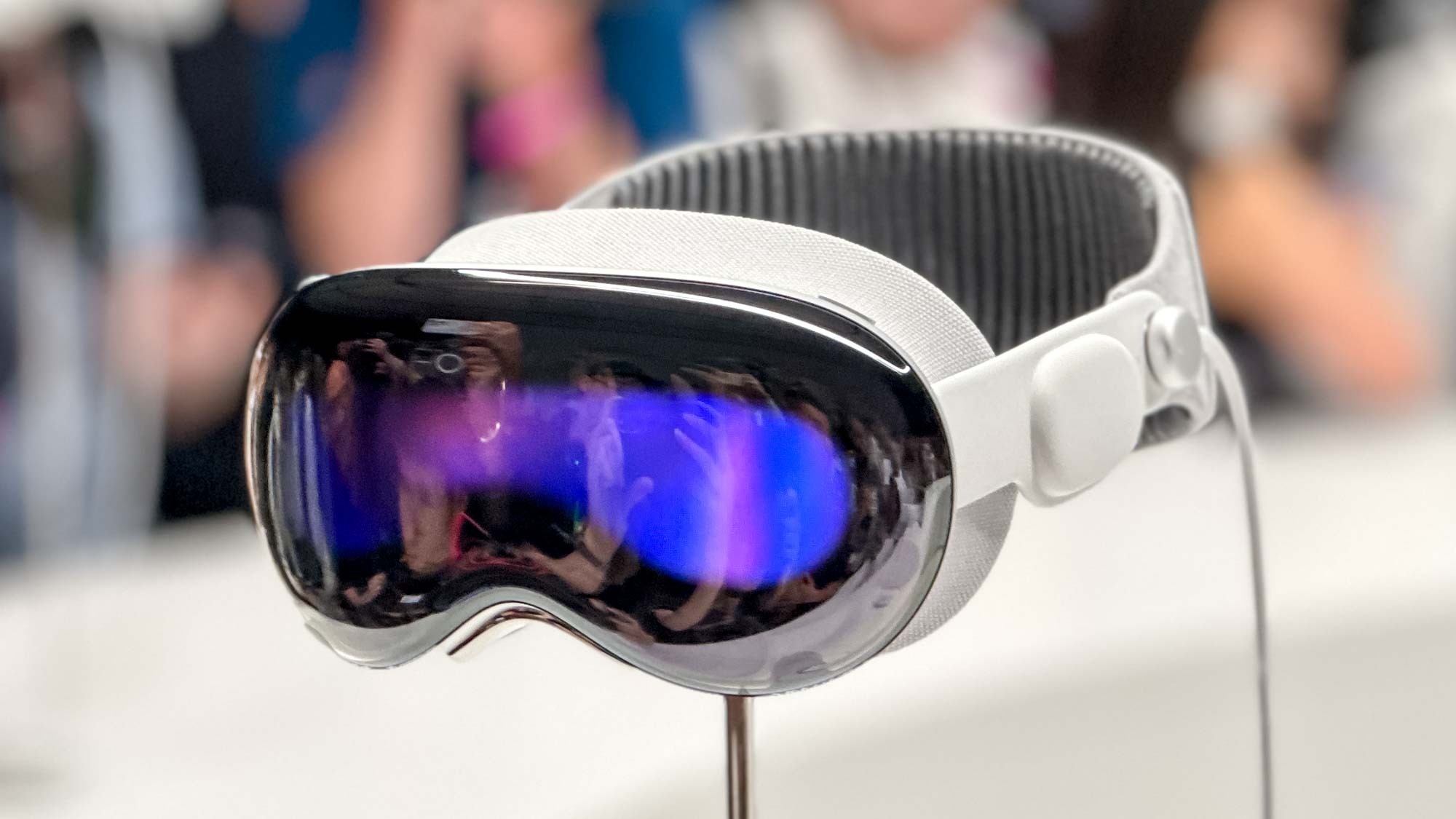Forget Apple Vision Pro — the next headset sounds way better
The need for custom lenses could be a thing of the past

The Apple Vision Pro won’t be coming out till early 2024, but a new patent may have teased a major upgrade for the next Apple VR headset after the Vision Pro.
Spotted by AppleInsider, this latest Apple patent ditches the custom Zeiss inserts and the Micro OLED twin 4K displays from the Vision Pro. In fact, it ditches traditional display technology altogether. Instead, it opts for a liquid display that can be fine-tuned based on the needs of the viewer.
In the patent, Apple describes a system of multiple chambers with flexible and/or rigid walls. Using a system of actuators, pumps and reservoirs, the liquid (possibly in part an oil-based mixture) would then be able to form and deform to make an optical lens, acting on electronic signals sent to the system of actuators, pumps and reservoirs.

Now, this is just a patent — a patent application at that, so this still hasn’t even been awarded to Apple yet. But if Apple can pull this off it would be a serious upgrade for VR headsets as a whole. As someone who typically wears glasses, one of the most annoying things about using a VR headset is trying to get the headset to work with my glasses.
Even on the Meta Quest 2, I find myself ditching my glasses for my time in VR because, thankfully, my vision issues allow me to still see relatively well with my glasses off. Others though have no choice but to live with an imperfect, often uncomfortable fit. That’s a big reason why Apple doesn’t allow glasses to be worn with the Vision Pro and is instead opting for custom Zeiss inserts.
So if Apple can make lenses that can be fine-tuned to replace glasses, that’s an upgrade I’m definitely interested in.
Current Apple Vision Pro display specs

Unfortunately, these futuristic liquid lenses won’t be coming just yet, so don’t expect them on the Apple Vision Pro. But the good news is that the Vision Pro’s displays are still excellent.
Sign up to get the BEST of Tom's Guide direct to your inbox.
Get instant access to breaking news, the hottest reviews, great deals and helpful tips.
That’s because the Vision Pro is powered by twin Micro OLED displays that give each lens 4K resolution and pixel density 64 times greater than the iPhone. This is despite the fact that each display is about the size of a postage stamp.
These displays are the first of their kind when it comes to VR headsets and it could be one of the biggest reasons why the Apple Vision Pro could be the best VR headset ever when it releases in early 2024. But it’s also potentially limiting Apple to producing just 400,000 units a year. So if you want your own Vision Pro, you may need to act fast.
More from Tom's Guide

Malcolm has been with Tom's Guide since 2022, and has been covering the latest in streaming shows and movies since 2023. He's not one to shy away from a hot take, including that "John Wick" is one of the four greatest films ever made.
-
sgodsell So what you are really talking about is a future headset from Apple, that could come with self adjusting lenses, so if you are near sighted, then this future headset could replace the need for that user to purchase additional lenses for Apple's headset. Anyone purchasing Apple's Vision Pro headset will need to purchase lenses that will fit inside Apple's headset, which is an additional cost. Where as a number of other headsets, currently allow their users to wear their existing glasses, like the Quest 2, which don't require their users to purchase separate lenses. Since Apple's headset requires glasses wear individuals to purchase separate lenses, then the cost of Apple's Vision Pro headset is going to cost a couple hundred more, because you need your prescription lenses in order to use Apple's headset.Reply
